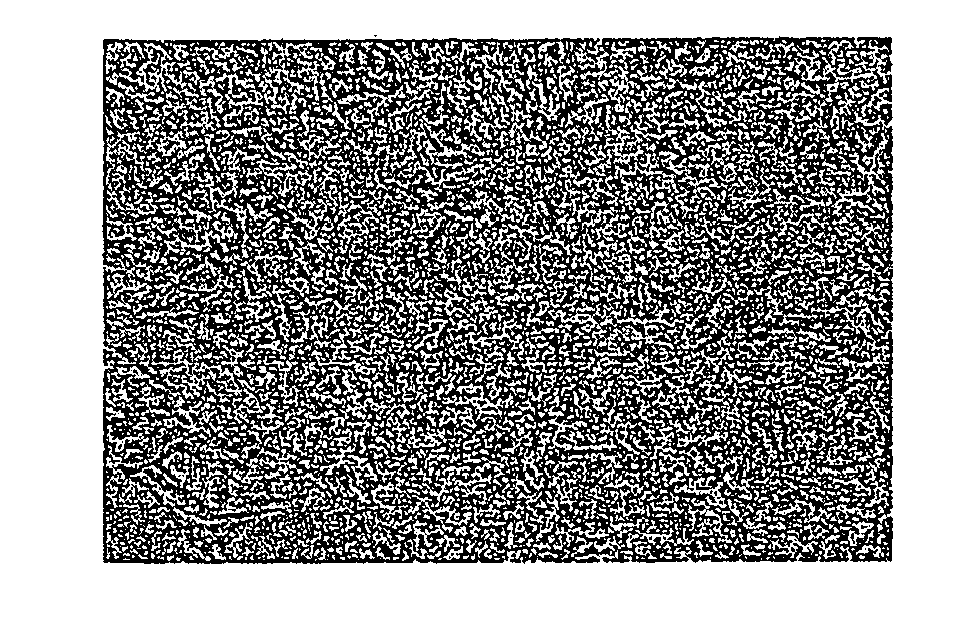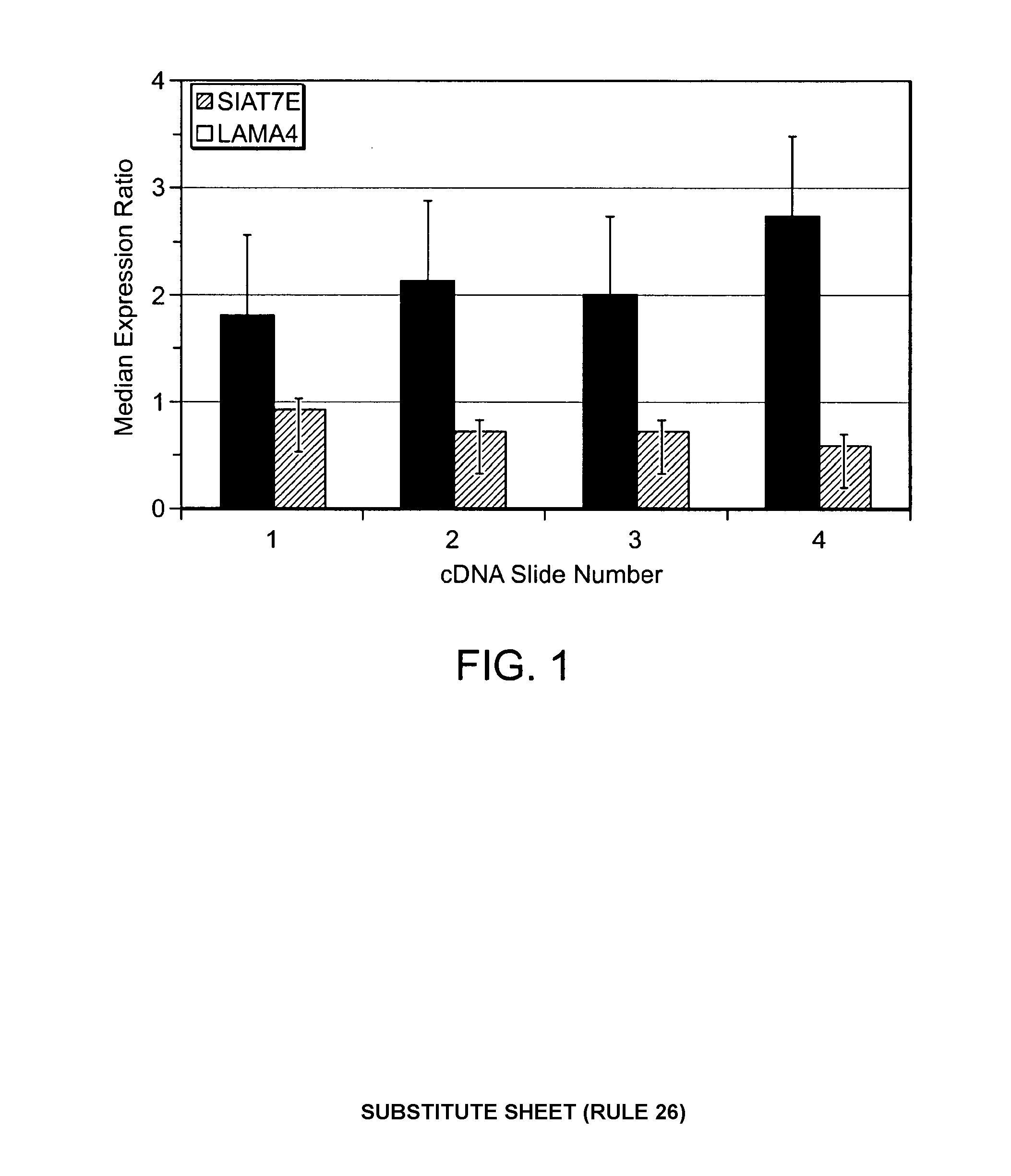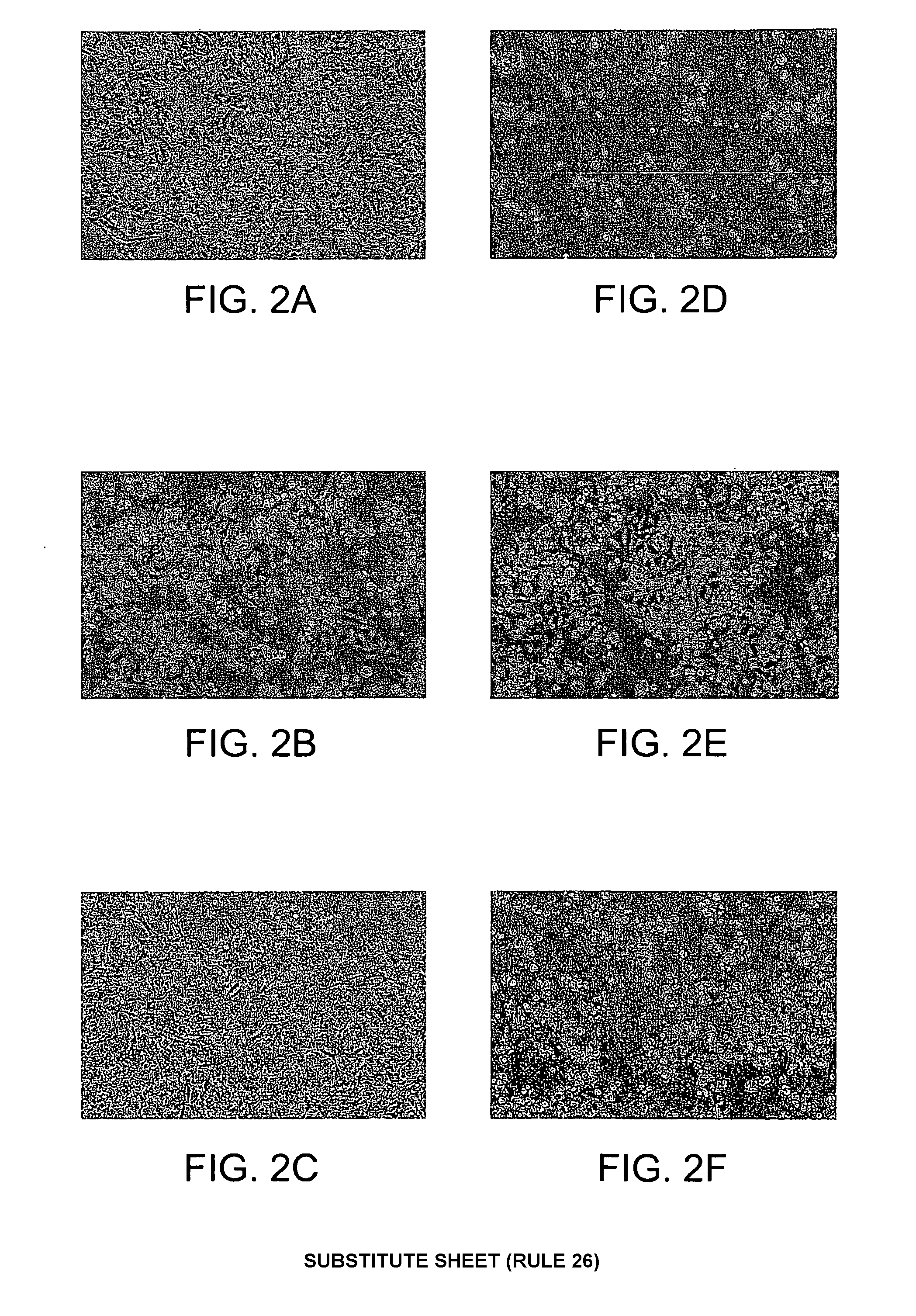Compositions and methods for modifying cellular properties
a technology of cellular properties and compositions, applied in the field of compositions and methods for modifying cellular properties, can solve the problems of increasing the cost of biological products, increasing the amount of protein that can be produced, and slow growth of cells engineered to produce biologically active products, so as to increase the expression of recombinant polypeptides, increase the expression of laminin 4 or sialyltransferase 7e, and increase the expression of recombinant polypeptid
- Summary
- Abstract
- Description
- Claims
- Application Information
AI Technical Summary
Benefits of technology
Problems solved by technology
Method used
Image
Examples
example 1
siat7e and lama4 were Differentially Expressed in Anchorage-Dependent and Anchorage-Independent HeLa Cells
[0115]The growth of anchorage-dependent and anchorage-independent HeLa cells was carried out in bio-reactors under similar conditions. Samples for microarray analysis were taken at time points when both cell lines had cell populations at roughly the same confluence (i.e., slightly above 90%) and approximately the same metabolic characteristics as measured by glucose concentration (3-4 g / L), lactate concentration (0.5-1 g / L), and pH (6.8-7.4).
[0116]Total RNA samples from anchorage-dependent and anchorage-independent HeLa cell cultures were purified and used to construct cDNA, which was analyzed using cDNA and oligonucleotide microarrays. Initial data analysis was carried out using the image analysis software for microarrays program from GENEPIX PRO, from Molecular Devices Corporation (Sunnyvale, Calif.) to visualize the hybridization on each of four hybridized cDNA microarray sli...
example 2
siate7e and lama4 are Differentially Expressed In Anchorage-Dependent Vs. Anchorage-Independent HeLa Cells
[0118]Expression ratios for these two genes are illustrated in FIG. 1 for each of the four hybridized cDNA arrays. Regardless of the assay method, the expression ratios of siat7e were consistently above 1, while the expression ratios for lama4 were consistently below 1. The inherent variability between cDNA slides in terms of expression ratios for the two selected genes established a need for verification of the results. To validate the results from the cDNA arrays, two pairs of oligonuceotide arrays as well as a series of RT-PCR experiments was conducted. The results of these experiments is shown below in Table 2, which demonstrates that the median expression levels across all three platforms are in line with one another for both genes.
TABLE 2Median expression ratios for 2 specific genes by different platforms;cDNA microarrays, oligonucleotide microarrays, and RT-PCRGeneOligonu...
example 3
Increased siat7e Expression Decreased Anchorage-Dependent Growth and Altered Cell Morphology
[0119]Transcription of siat7e was lower in anchorage-dependent HeLa cells than in anchorage-independent HeLa cells, whereas transcription of lama4 was lower in anchorage-independent HeLa cells than in anchorage-dependent HeLa cells. If these genes function in the adhesion and / or growth characteristics of HeLa cells, then enhancing or inhibiting their expression should affect cell physiology. To evaluate the effect of siat7e on cell adhesion, the expression of siat7e in anchorage-dependent HeLa cells was increased by transfecting the cells with the full-length gene. The images of anchorage-dependent HeLa cells shown in panel FIG. 2A were compared with those of corresponding HeLa cells over-expressing siat7e shown in FIG. 2B. Enhancing the expression of siat7e decreased the percentage of viable cells attached to the culture surface and changed cell shape. The change in cell shape observed in so...
PUM
| Property | Measurement | Unit |
|---|---|---|
| temperatures | aaaaa | aaaaa |
| temperatures | aaaaa | aaaaa |
| temperatures | aaaaa | aaaaa |
Abstract
Description
Claims
Application Information
 Login to View More
Login to View More - R&D
- Intellectual Property
- Life Sciences
- Materials
- Tech Scout
- Unparalleled Data Quality
- Higher Quality Content
- 60% Fewer Hallucinations
Browse by: Latest US Patents, China's latest patents, Technical Efficacy Thesaurus, Application Domain, Technology Topic, Popular Technical Reports.
© 2025 PatSnap. All rights reserved.Legal|Privacy policy|Modern Slavery Act Transparency Statement|Sitemap|About US| Contact US: help@patsnap.com



